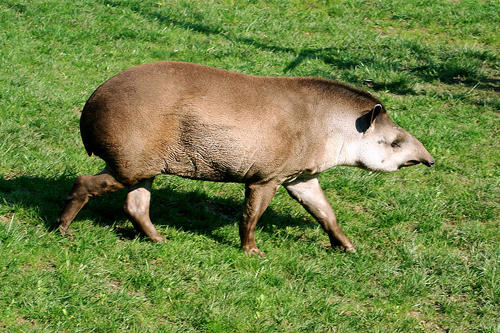THIS Friday marks World Tapir Day, and Edinburgh Zoo’s resident mother and daughter act are in for a treat on their special day.
Edinburgh Zoo is home to two Malayan Tapirs, eight year old Sayang and her daughter, six month old Nadira. T
here are four types of tapirs, of which the Malayan tapir is the largest, these herbivores are known for their distinct markings of stripes and spots when they are young that then fade as they grow, these markings are the perfect camouflage for the young in the rainforests of Asia – their natural habitat.
Wild Tapir numbers are falling
World Tapir Day began as an opportunity to raise awareness of the four types of tapirs and draw attention to their plight for survival in the wild. Wild Malayan tapir numbers are falling and they are under threat in their natural habitat due to logging, deforestation and hunting.
Sayang and Nadira will celebrate this special occasion with some fruit – a real favourite treat of this tapir pair.
Donald Gow, hoofstock keeper at Edinburgh Zoo, said: “World Tapir Day is a great occasion for us and also for our Tapirs at Edinburgh Zoo, helping to raise the profile of these fantastic animals and the conservation work surrounding them.
“Here at Edinburgh Zoo, we’ve had great success with our tapir breeding programme and Sayang has proven herself to be a real natural when it comes to rearing calves. Nadira, who was born in November last year, has thrived with the help of mum and the pair of them have a great relationship.
“Further afield in the Brazilian Pantanal, one of the world’s largest freshwater wetlands, we also carry out important research and conservation work with regard to Brazilian or Lowland tapirs, looking at their population density, habitat use and potential threats.
“So for World Tapir Day, we thought it would be a treat to skewer fruit onto the branches, one of their firm favourites! They’ll strip the fruit from the branches using their distinctive prehensile nose which acts a lot like an elephant’s trunk, it’s fascinating to watch”.


